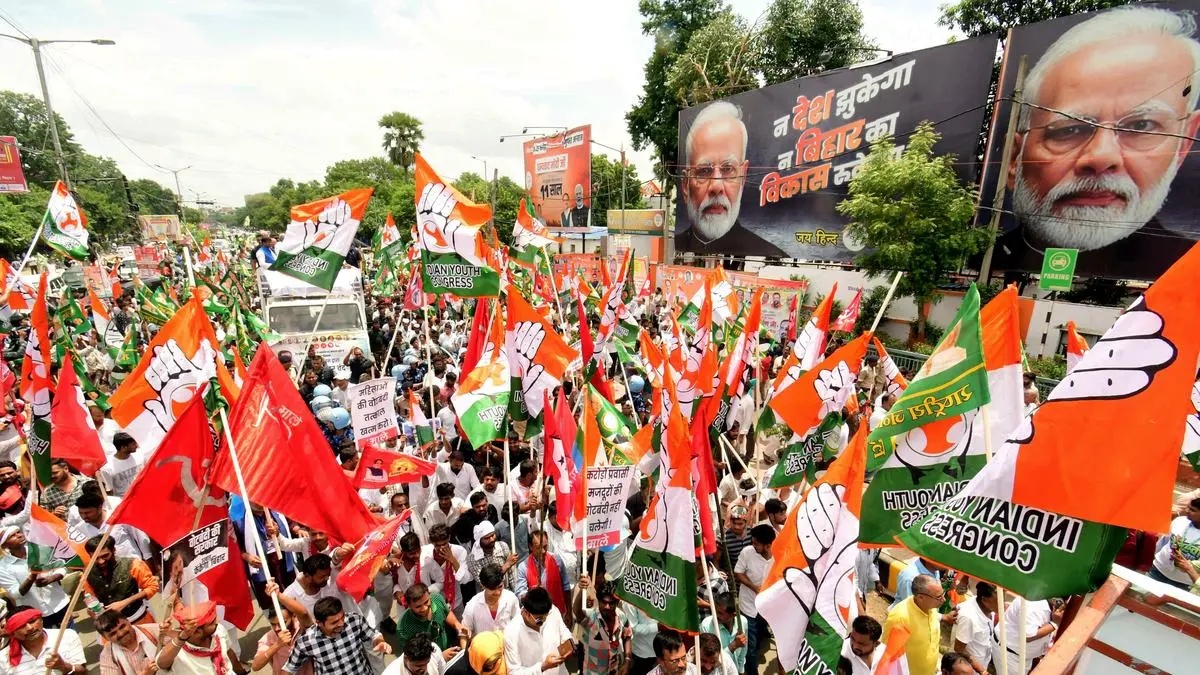
National Strike Against Labour Reforms
Over 25 crore workers across India’s public and private sectors participated in a massive nationwide strike on July 9, demanding the repeal of four Labour Codes enacted by the Union Labour Ministry in 2019-20. Organized by 10 central trade unions, the protest centered on a 17-point charter of demands aimed at reversing perceived erosion of labor rights. The strike, which saw significant mobilization in rural areas, highlighted the growing discontent among informal sector workers, agricultural laborers, and youth. Unions accused the Modi government of prioritizing economic reforms over workers’ welfare, with critics alleging that the Labour Codes diluted essential protections. The protest marked a rare coordinated effort against the codes, which consolidated 29 of 44 pre-existing labor laws, sparking widespread criticism from trade unions and grassroots movements.
Government Response and Unions’ Criticism
The Central Trade Unions, including the Indian National Trade Union Congress and All India Trade Union Congress, accused the government of failing to address unemployment and inflation, which have exacerbated workers’ hardships. The strike created a bandh-like situation in states like Assam, Bihar, and Tamil Nadu, with protests extending to sectors such as banking, insurance, and railways. While the Bharatiya Mazdoor Sangh distanced itself from the strike, labeling it politically motivated, other unions emphasized the need for systemic reforms. Key demands included a minimum monthly wage of Rs.26,000 and an end to exploitative practices like 10-hour workdays in Telangana. Analysts noted the strike’s significance as a rare display of unified labor action against the Labour Codes, which have faced prolonged resistance from grassroots movements.
Legal Challenges and Political Divisions
The strike’s legal and political dimensions added complexity. In Kerala, workers at the Kochi Refinery proceeded with a strike despite a High Court order banning it, highlighting tensions between labor rights and corporate interests. Meanwhile, opposition parties in Bihar faced accusations of hijacking the workers’ agenda, with Hind Mazdoor Sabha president Harbhajan Singh Sidhu criticizing the INDIA bloc for ignoring labor issues. The strike also drew attention to the government’s handling of the Samsung workers’ protest in Tamil Nadu, where arrests of demonstrators sparked further outrage. These developments underscored the broader struggle between labor unions and policymakers, with the strike serving as both a protest and a call for systemic change.
Broader Economic and Social Implications
Analysts view the strike as a reflection of deepening economic and social grievances, including rising inflation, stagnant wages, and weakened collective bargaining rights. The protest’s scale, spanning sectors from coal mining to defense, demonstrated the cross-industry nature of labor discontent. However, the government’s response remains fragmented, with vacancies in public sector jobs—such as 1.55 lakh in the armed forces and 2.5 lakh in railways—highlighting persistent employment challenges. The strike also intensified debates over the balance between economic growth and labor rights, with critics arguing that the Labour Codes have undermined workers’ ability to organize effectively. As the movement gains momentum, the outcome could reshape India’s labor policy landscape.
Global Context and Future Outlook
The strike has drawn comparisons to international labor movements, emphasizing the global struggle for workers’ rights in the face of neoliberal economic policies. While the immediate focus remains on repealing the Labour Codes, the long-term implications could extend to broader reforms in labor laws and social welfare. The involvement of diverse sectors and regions suggests a potential for sustained pressure on policymakers. However, the path forward will depend on the ability of unions to maintain cohesion and navigate legal and political challenges. As the movement evolves, its success in achieving tangible reforms will hinge on both grassroots mobilization and strategic engagement with political actors.



